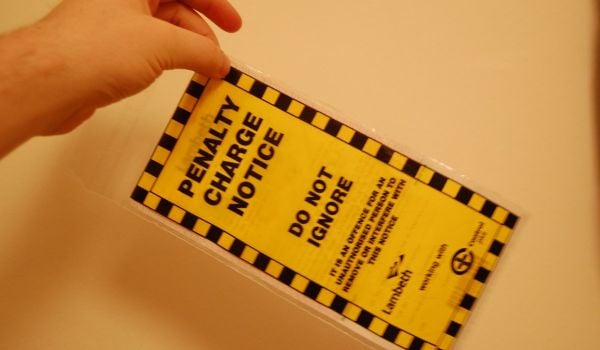This article originally appeared in the most recent issue of The Urbanist.
Have you ever looked up the fare for a round-trip flight, only to find two days later that the price has gone up $200? Or perhaps you’ve had better luck finding rock-bottom, seemingly half-price deals to travel somewhere at the last minute? Why do different seats on the same plane, all purchased at different times, vary so widely in price?
It’s because airlines employ a tool called dynamic pricing — a system that adjusts prices based on expected demand to increase profit in light of fixed capacity and the elasticity (or flexibility) of consumers’ individual demands. This enables them to yield as much revenue as possible for each fixed cost (or flight), sometimes resulting in substantial consumer savings, other times not.
The price of public goods provided by either government or a regulated monopoly — think transit rides, drinking water, park admission — typically isn’t based on supply and demand, because there is no functioning “market” for such goods. Prices may be based on the cost to supply the goods or the cost that regulators believe will meet public expectations of fairness, or some combination of the two. Sometimes, there is no price at all because it has not been possible, either physically or politically, to charge for resources based on use.
But it is becoming possible for the public sector to employ dynamic pricing, as airlines do, to manage certain limited public resources. Sometimes called demand-based pricing or real-time pricing, this is a more efficient way of allocating publicly provided or regulated goods, especially those that are subject to wide fluctuations in demand over a short period of time, such as within an hour or a day. By judging people’s willingness to pay for a publicly provided service — such as electricity, road space or parking — demand-based pricing enables a more nimble match-up of supply and demand than has previously been possible.
The innovations that fuel smart cities make these pricing schemes possible. A combination of new sensory and computing technologies, two-way communications and devices that both create and analyze large volumes of data can now measure and communicate real-time demand. This information can be used to automate price signals for resources, such as at smart parking meters. In some cases, it can also be used to remotely trigger a certain action, such as powering down preselected devices during periods of peak electricity demand.
Demand-based pricing offers three key public benefits:
- Economic efficiency, or maximizing the utility or value from a finite set of resources
- The creation or growth of a revenue stream that could be used to recoup the cost of building infrastructure or to maintain levels of service for supporting it
- The avoided cost and environmental impact of building new infrastructure to accommodate peak demand
Demand-based pricing has potential environmental and economic benefits. Because it is a more efficient mechanism for allocating public goods, it can help reduce waste or loss that is otherwise paid for by taxpayers or ratepayers. A new revenue stream generated by road pricing, whether congestion pricing or a peak-period bridge toll, for example, can be directed toward road maintenance or to transit operations, which are often underfunded. By reducing peak demand, demand-based pricing for electricity could save ratepayers the cost of purchasing reserve power production, allowing those funds to be invested in energy efficiency or even returned to customers through future electricity price decreases.
The environment benefits, because operating or building new infrastructure just to satisfy peak periods of demand can be avoided, and peak demand for the resource itself can be reduced. By pricing peak demand for traffic lanes at a rate that encourages travelers who can drive at other times of day to do so, for example, we can both avoid building a new lane (a costly enterprise that will increase emissions in the long term) and reduce traffic congestion in the short term (which releases more emissions than free-flowing lanes of travel).
Of course, there is a tradeoff here: Peak-period pricing may be “regressive,” a situation where a uniformly-applied fee takes a larger percentage from low-income people, hitting them harder. Any demand-based pricing scheme for public goods must be designed to mitigate disproportionate impacts as best as possible, especially with goods that were previously “free.” One way to mitigate equity concerns around new pricing plans would be to provide a certain quantity of things like free trips and reduced rates to lower-income people.
Let’s take a closer look at a couple of examples.

Electricity
Demand-based pricing of electricity can save ratepayers and electric utilities both capital and operating costs. Capital costs may be saved by avoiding (or at least postponing) building new facilities that will be infrequently utilized except in extreme peak demand circumstances (i.e. 3pm on the hottest day of the summer). Operating costs may be saved by utilities not having to have a large operational reserve or spare capacity online to deal with unanticipated or sudden changes in demand. Instead, existing facilities will operate more frequently. The cost savings from efficient pricing may be significant. Between 10 and 20 percent of electricity costs in the United States are due to peak demand during only 80 to 100 hours of the year.
The key new technologies that enable demand-based pricing for electricity are smart meters and smart grids. Together, they form an energy network that is more efficient and can better utilize decentralized and small-scale renewable energy sources such as solar and wind. Because it monitors real-time demand, a smart grid could enable significant expansion of demand-response programs — which currently enroll mainly volunteers and large business customers — into the residential market. Demand-response programs provide an incentive to enrolled participants to temporarily reduce electricity demand on peak days. But they also create permanent energy savings by reducing demand in off-peak periods by an average of 4 percent. Smart meters allow users to monitor real-time energy consumption and to take advantage of variable-rate pricing plans where they are available. Between consumers, utilities and the environment, everyone stands to gain from improved efficiency in pricing and expansion of demand-response programs.

Parking
Though parking costs vary by location, hourly or daily rates tend to be predictable and fixed. But there are inefficiencies and socioeconomic impacts with getting the price of parking “wrong.” While overpricing parking could lead, for example, to shoppers or tourists taking their business elsewhere, underpricing leads to excess driving, which causes congestion and unnecessary emissions (the perception of limited parking could also lead shoppers or tourists to choose a different destination). Now, new smart parking meters can use demand-based pricing to set the price of parking right at the equilibrium of supply and demand. A theory of transportation economics holds that the optimal occupancy rate of publicly provided parking is 85 percent — where little or no circling is necessary to find a spot. New technologies that can monitor occupancy and gauge demand block by block can help set rates to achieve this goal.
San Francisco was one of the first cities in the country to test this model with its SFpark program, which began in 2010. SFpark meters were installed in a few pilot districts to begin: Fillmore, Downtown, Fisherman’s Wharf and more. Rates vary by time of day, day of the week, block by block and over time (monthly) to respond to demand. Parking sensors installed in the street in each parking space detect occupancy rates, and program managers review utilization data every month, at which time they may move hourly maximum rates up or down by 25 to 50 cents. Two-way communications of these sensors make it possible for drivers to look up real-time availability using a smart phone app.
Besides the benefits of more readily available parking in SFpark districts and reduced congestion and emissions, the program may help improve the speed and reliability of transit vehicles, which would spend less time blocked by traffic or double-parked vehicles.

Roads
Demand-based pricing for roads can make travel more efficient within a congested zone (like a downtown area), a congestion choke point (like a bridge) or throughout a region using a network of high-occupancy toll (HOT) lanes. As with smart parking policies, better utilization of road space through demand-responsive pricing could reduce congestion, especially during peak demand periods, improve the speed and reliability of transit vehicles and improve the attractiveness of other modes of travel such as transit and biking.
Road pricing is a common practice, especially on the East Coast of the United States, but rapidly changing toll prices to reflect real-time traffic conditions is newer. London, Stockholm and Singapore are models of city center cordon or congestion pricing; the idea is being studied for San Francisco. The Metropolitan Transportation Commission is transitioning many of the Bay Area’s high-occupancy vehicle (HOV) into HOT lanes, which are expected to better utilize existing capacity and reduce idling and emissions. An additional public benefit is a new revenue source that can be used to pay for road maintenance or transit.
Full-road pricing is probably better than establishing single HOT lanes; a single-toll-lane approach could result in more driving, not less (by creating less congestion in the unpriced lanes). Real-time congestion pricing may be more difficult to implement than smart parking policies, time-of-use energy pricing or demand-response programs. This is because people are generally accustomed to paying for parking and electricity already, but not to drive on freeways. As well, there are real-time benefits to participants in these other programs: Being able to find a parking spot (and in SFpark, to pay with a credit card) or saving money by turning off nonessential appliances. Some of the equity impacts of this type of plan may be mitigated by reinvesting revenue from full-road tolling into public transportation services.
* * *
Cities now have the tools and technologies to better utilize key pieces of urban infrastructure by getting the price much closer to the real equilibrium price than ever before. By doing so, we gain a host of co-benefits including quality of life improvements such as less traffic and environmental benefits such as fewer emissions. Smart cities of the future will invest in these opportunities as a boon to their own residents and businesses, and to society at large.
Laura Tam is SPUR’s sustainable development policy director.
















